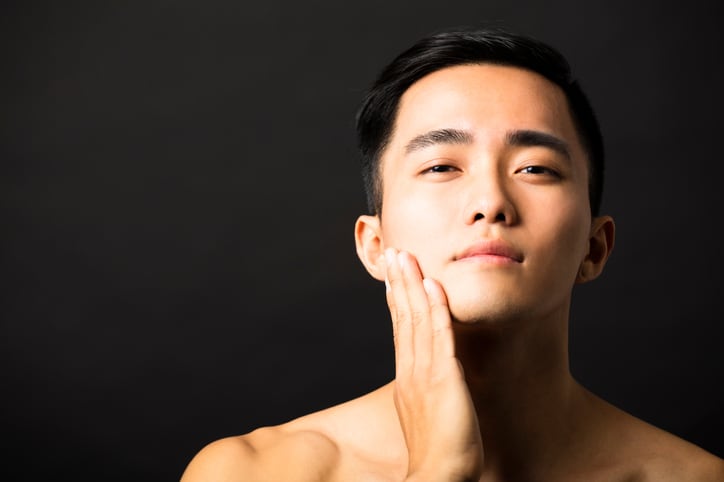The popularity of ingestible beauty products, particularly those featuring ingredients like ginseng, probiotics, hyaluronic acid and collagen, has surged in recent years, Aishwarya Rajpara, health and beauty consultant at Euromonitor International, told NutraIngredients.
Driving this growth is a powerful shift in consumer behavior, particularly in Asia, where demand is rapidly increasing. According to Euromonitor data from 2024, the region dominated the global beauty supplements market, commanding nearly 70% of its total value.
This growth in Asia is having a ripple effect into the European market, Rajpara explained, and as Asian consumers lead the way in normalizing BFW solutions, European brands are responding by expanding their product lines, integrating clinically-backed ingredients like collagen peptides and adaptogens, and refining their messaging around holistic wellness.
Format preferences
In terms of format, capsules remain the dominant choice globally, both in product availability and consumer preference, Rajpara said.
However, while gummies traditionally can’t pack in as many vitamins and minerals due to space and taste constraints, they are emerging as a favorite dynamic format, gaining rapid popularity due to their convenience and taste appeal.
Nick Morgan, managing director of insights provider Nutrition Integrated, previously told NutraIngredients that despite the concerns, there is “huge enthusiasm” from consumers for the gummy category.
“Whilst the enthusiasm for gummies is already there and justified, it feels like gummies have only just scratched the surface of opportunity,” he said, noting that brands should focus on proving enhanced bioavailability to build consumer trust.
The BFW consumer
Gen Z and Millennial consumers are the key consumers, Rajpara noted. The growing demand from these segments reflects the increasing influence of social media as a main marketing channel fed by beauty, skincare and wellness influencers promoting ingestible beauty ingredients as essential to a healthy beauty routine.
That said, older consumers are gradually being influenced by these trends as well, she added.
According to Euromonitor’s latest Voice of the Consumer: Health and Nutrition Survey, 27% of global respondents ages 45 to 59 reported using vitamins and dietary supplements specifically for beauty and skin health, up from 25% in 2024.
“This growing adoption among older demographics highlights the expanding appeal of beauty supplements beyond younger consumers and underscores the shift towards more holistic approaches to health and wellness across age groups,” Rajpara noted.
The same report shows that women continue to lead in beauty supplement use, engaging with these products more actively than men. Survey data revealed that 28% of female respondents said they use supplements to improve skin health, with women ages 30 to 44 driving most of the demand.
However, the male skin-health space is certainly growing, evidenced by the survey data revealing 24% of male respondents report supplement use for skin health, and several brands are starting to see opportunities within the male BFW sector.
MyVitamins, the supplement arm of UK based THG, recommends several of its stand-alone ingredients for men’s skincare, including collagen and vitamin C for reduced wrinkles and improved skin structure, as well as hyaluronic acid for retaining moisture. It also recommends retinol to reduce acne and dryness, and zinc combined with magnesium to protect against irritation from shaving.
It is younger male consumers, especially those between the ages of 18 and 29, who show the highest engagement with beauty supplements, according to the Euromonitor data. However, interest drops off among older men, highlighting a generational gap in adoption within the male market.
The future of BFW supplements
Looking ahead, Rajpara sees a growing trend for beauty to be all-encompassing.
“There is an increasing expectation for beauty supplements to deliver holistic health benefits-extending beyond aesthetics to support areas such as gut health, energy and sleep,” she said.
“This evolving consumer demand is driving innovation, leading to the development of multifunctional products that seamlessly integrate beauty and overall wellness into a single solution.”
Indeed, emerging brands such as You’re Looking Well, the ingestible/topical collaboration brand, are honing in on skin health through the gut-skin axis, and with “sleep-maxxing” a trending TikTok topic, more and more companies are promoting sleep-enhancing qualities of key ingredients that support cellular repair and reduced inflammation.
Technological advancements will continue to be a key catalyst for progress in this space, Rajpara forecasts, noting how in mid-2024, Shiseido set out to disrupt the market with its new ampoule (a small sealed vial) drinks, using proprietary nutri-vessel network technology designed to enhance nutrient absorption and boost collagen production.
“As technology continues to evolve, we can expect even more groundbreaking products to reshape the industry,” she said.
Additionally, with the rise of GLP-1 medications for weight loss, concerns about skin elasticity are increasing, creating new opportunities for brands focusing on skin care-based solutions to address the issue of ’Ozempic face’. Rapid and extreme weight loss strains the body, which can lead to a loss of skin elasticity, disruption of the skin barrier and quick depletion of essential fatty acids.
“This has led to a demand for targeted supplements, such as Replenza Supplements, launched in late 2024, which address side effects of GLP-1 treatments by supporting muscle recovery, digestive health and skin elasticity,” Rajpara said.


